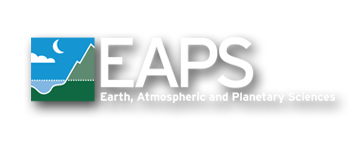Discover EAPS: Extreme Weather and Climate
Green Bldg, Cambridge, MA 02142
USA
DEAPS Extreme Weather is a five-day exploration of the science of the Earth at MIT and at Mt Washington in New Hampshire, covering examples of extreme weather, hurricanes and blizzards, and current topics of climate research. What have we learned from the past climate, what do we know of the present, and what can we say about the future?
Lectures by experts in the field are accompanied by rotating fluid laboratory experiments, intended to illustrate the behavior of fluids on the rotating earth. Students have the opportunity to work in small groups and get their hands wet, discussing their results with faculty, graduate students and peers.
What Will I Do?
» You will study extreme weather examples, such as hurricanes and blizzards
» Perform rotating fluid experiments to illustrate how fluids behave on the rotating earth
» Learn about current issues of climate research in informal lectures by faculty and staff
» Explore MIT campus and nearby Cambridge
» Explore the habitat at Mt Washington with meteorology, geology and flora activities
» Visit the Mt Washington Observatory, where extreme weather is the norm
» Observe the stars at Wallace Observatory and at Mt Washington
The last two days of the program are spent on a trip to the Mt Washington Observatory in New Hampshire. The 6288 ft mountain peak is known as the place where “extreme weather” is the norm. Here students are exposed to the challenges of observational meteorology together with a direct experience of the mountain environment.
DEAPS 2017 SPECIFICS
DATES: Wednesday, August 23rd through Sunday, August 27th.
PLACE: EAPS – MIT Campus, Green Building (Building 54) plus 2 days in New Hampshire with an overnight stay.
SUPPLIES: All students should bring good walking shoes, a waterproof jacket, a backpack, and a water bottle. Hiking at the top of Mt Washington is optional.
AVAILABLE SPACES: 15
COST: The Department of Earth, Atmospheric and Planetary Sciences will cover all costs.



